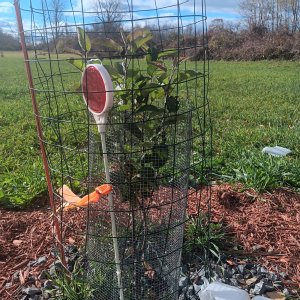Well, it’s that time of year again when I will be traveling to various places to visit relatives and eyeing up apple trees along the way that I’d like to gather scions from. For years now, I have been cutting apple scions at this time of year to use for benchgrafting or topworking four or five months later. I typically didn’t check on them in the refrigerator afterwards often enough to prevent them from either drying out or getting moldy.
Given that the trees are frozen when I cut the scions at this time of year, I started simply putting the frozen scions into one of my freezers. Later on, before using them, I’ve been moving them to a refrigerator for a week to thaw out and allow their cells to acclimate to the new temperature. That’s been working just fine for me over the years.
I realize that information this flies in the face of countless internet articles and blogs, and will sound like bullsh**t to some, so I’m not planning to look at the comments I receive from this post. That’s just what has worked for me for years now. Your results may vary.
I thought since I have learned so much information from Habitat Talk that I would share with the rest of you this bit that I learned.
Given that the trees are frozen when I cut the scions at this time of year, I started simply putting the frozen scions into one of my freezers. Later on, before using them, I’ve been moving them to a refrigerator for a week to thaw out and allow their cells to acclimate to the new temperature. That’s been working just fine for me over the years.
I realize that information this flies in the face of countless internet articles and blogs, and will sound like bullsh**t to some, so I’m not planning to look at the comments I receive from this post. That’s just what has worked for me for years now. Your results may vary.
I thought since I have learned so much information from Habitat Talk that I would share with the rest of you this bit that I learned.


